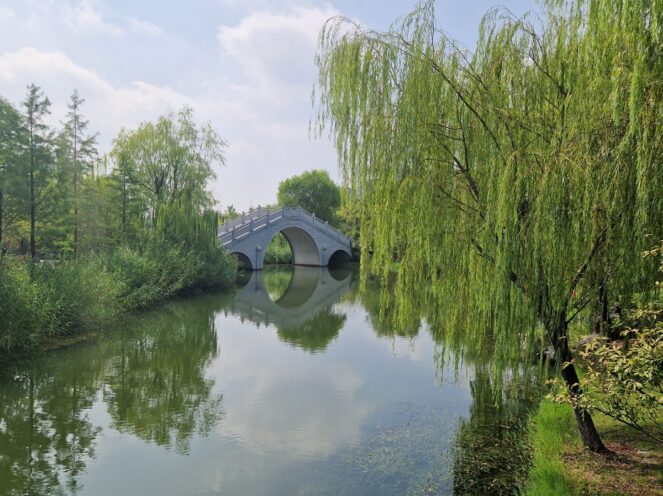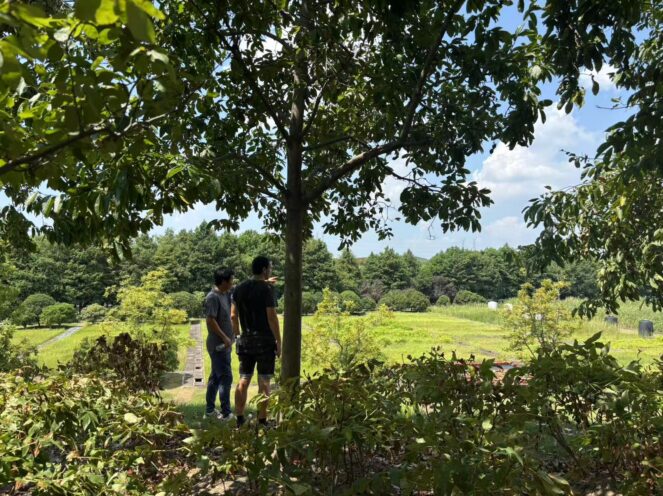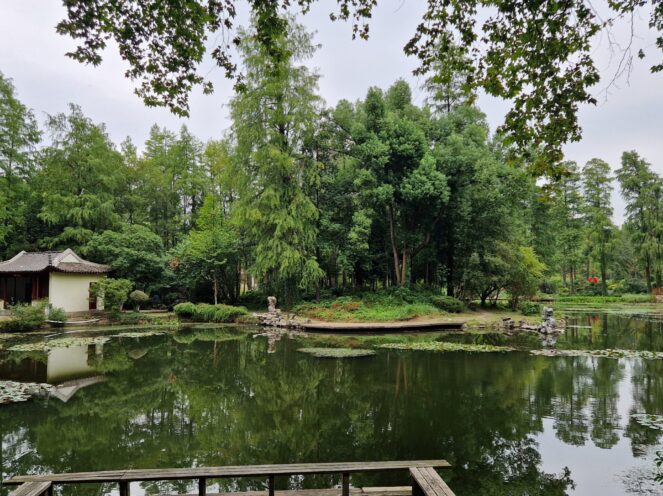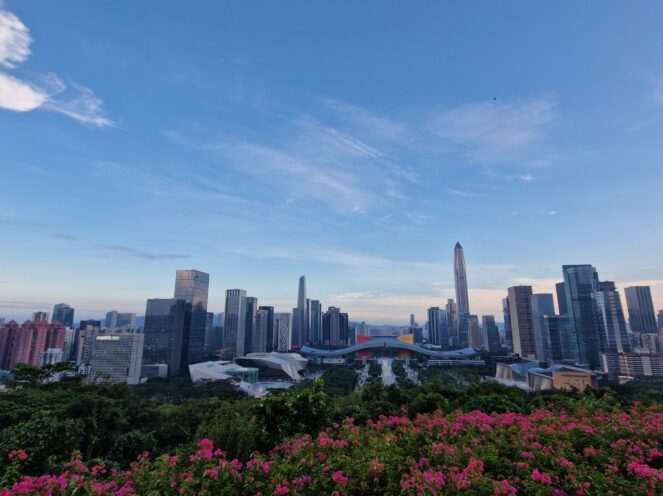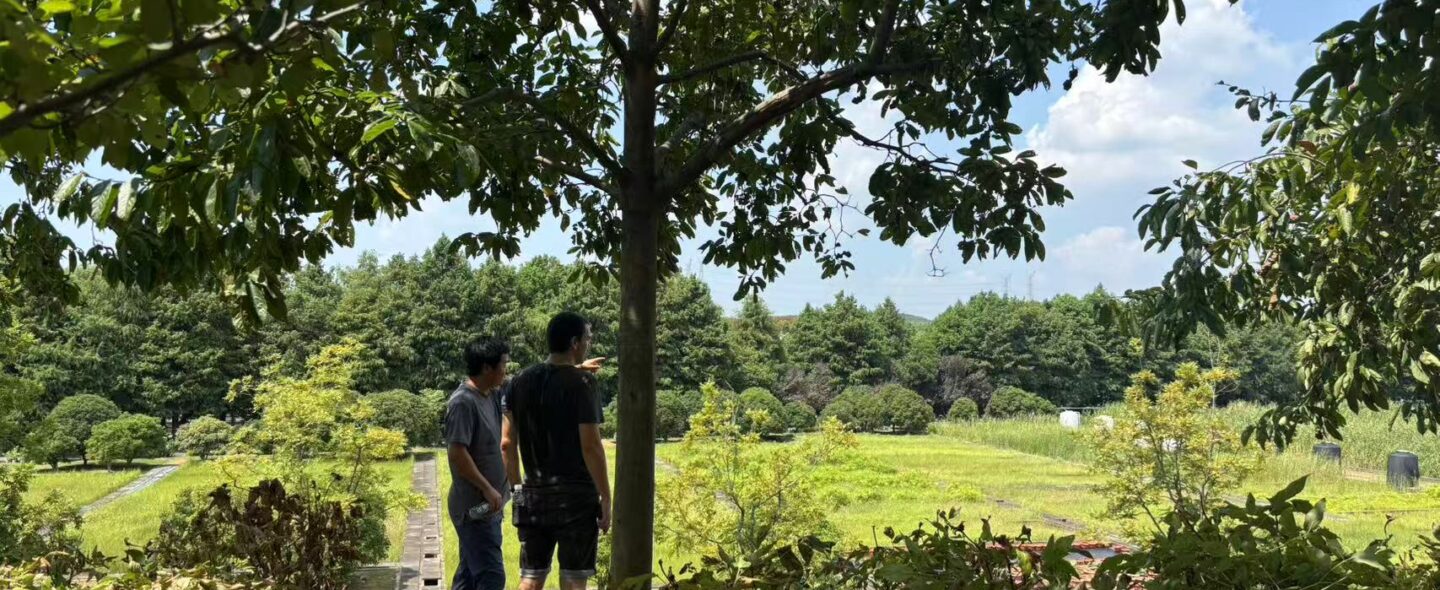
Author

Stefan Stevanovic is the Research Associate at the ZHAW Zurich University of Applied Sciences. Stefan is part of the Plant Design Research Group which specializes in integrating urban trees into nature-based solutions such as sponge cities. His expertise spans from planning to implementation, with a focus on overbuildable substrates and plant design in intense urban spaces.
When I boarded my flight to Shanghai, I carried more curiosity than expectations. I knew China primarily through stories I had heard or read. A country of immense size, rapid growth, and fascinating contrasts, where tradition meets cutting-edge innovation. Professionally, I was familiar with the concept of “Sponge Cities” through research, but I had never witnessed how these ideas were truly implemented on such an extraordinary scale.
What followed was one of the most inspiring and transformative months of my professional and personal life. My journey took me through some of the most captivating landscapes and kindest people I have ever encountered, from the vibrant streets of Shanghai, to the poetic gardens of Suzhou and Hangzhou, the historic depth of Beijing, the warm hospitality of Wuhan, the futuristic energy of Shenzhen, and the cultural richness of Guangzhou.
I discovered not only what China can teach us about urban resilience and design but also what it means to connect through openness, collaboration, and shared purpose across disciplines, cultures, and generations. As I look back on my journey, I think that perhaps the future of urban living isn’t ahead of us, but already taking shape in China?
Exceeding All Expectations
Before arriving, I had modest expectations. My main goals were to visit ongoing sponge city projects, meet experts, and exchange ideas. What I encountered went far beyond that. From the moment I landed in Shanghai, I was struck by the efficiency, scale, and structure of everyday life. The city operated like a perfectly synchronized system, despite having a population three times that of Switzerland.
Swissnex in China provided consistent support throughout my stay. Thanks to the warmth and professionalism of Cissy Sun, Head of Academia & Arts, and Aijing Cao, Academic Project Manager, this experience would not have been possible on my own. Within days, I was meeting leading researchers, professors, and planners across the country. What I discovered was not only China’s advanced technical implementation of sponge city principles, but also a deep integration of tradition, nature, and community into its urban fabric. They have managed to transform green spaces into dynamic environments that balance aesthetics, function, and ecological value, all while staying true to their cultural roots.
What Grows When You Share Knowledge
From a professional perspective, this journey fundamentally expanded my understanding of urban water management. While Europe often implements nature-based solutions through small, localized interventions, China operates on an entirely different scale. Entire districts are designed according to sponge city principles, integrating wetlands, permeable pavements, cascading ponds, and vegetated channels into the urban structure.
I visited projects including Chenshan Botanical Garden in Shanghai, the Lingang Sponge City demonstration area, Daguan Wetland Park in Guangzhou, and Xiangmi Park in Shenzhen. Each revealed a unique interpretation of how water, vegetation, and people can coexist. Particularly impressive was how multifunctionality shaped every design. For example, most parks designed to manage floodwater during rainy seasons transform into recreational landscapes in dry months. In Chinese garden design, landscape and garden were never separate concepts, the garden was conceived as a miniature landscape, embodying the same natural and philosophical principles.
On a personal level, what held the deepest meaning for me were the human connections. The hospitality I encountered was extraordinary. People went out of their way to guide me, to share, and to include me in their world. Through them, I learned that resilience is not merely an environmental concept but a social one as well. It manifests in how communities support one another and how collaboration strengthens our collective capacity to adapt.
-
![]()
In Hangzhou the Peach Blossom Lake Park (Taohua Lake Park) contains nearly 1000 peach trees of around 20 different varieties. (Source: RG Plant Design/ ZHAW)
-
![]()
Visit to the beautiful Chenshan Botanical Garden with Professors Song Yigang and Shang Kankan in Shanghai. (Source: Aijing Cao/ Swissnex)
-
![]()
Sunset at the artificial Lake Dishui in Nanhui New City (Shanghai). (Source: RG Plant Design/ ZHAW)
Lessons from a Master
The most emotional day of my trip came during the Annual Conference of the Climate Resilience Committee of the Chinese Society of Landscape Architecture in Guangzhou. I had been invited as a keynote speaker to present our research on urban trees and sustainable substrates in Switzerland. Speaking in front of experts, researchers, and students from across China was an incredible honor and a profoundly personal experience.
I dedicated my talk to Prof. Kongjian Yu, whose passing in a tragic accident had shaken the global landscape architecture community just days earlier. Prof. Yu’s philosophy of “letting nature do the work” has deeply influenced my thinking and the broader sponge city movement. As I spoke about replicating natural landscapes in urban design, I felt his presence in every word and gesture. Afterwards, I shared an emotional conversation with Prof. Li Dihua, who reminded me of the power of sharing in knowledge, in culture, and in life.
That word “sharing” lingered with me. In China, sharing is woven into daily life: meals are communal, space is collective, and successes are celebrated together. It is a mindset that shapes cities into open, adaptive, and inclusive forms. It reminded me that I had already encountered Prof. Yu’s influence throughout my journey, visiting sponge city projects grounded in exactly this philosophy.
When Local Detail Meets National Strategy
Comparing expertise in my field between China and Switzerland reveals fascinating contrasts. In Switzerland, our sponge city efforts focus on decentralized, small-scale interventions like tree pits, rain gardens, green roofs, and permeable surfaces that enhance local resilience. We emphasize precision, integration into existing infrastructure, and community participation.
China, on the other hand, operates on a macro scale. Sponge city projects form part of national strategies, often encompassing entire districts and cities. This scale enables systemic impacts such as flood control, biodiversity enhancement, and broad public engagement. However, it also presents challenges including long-term maintenance, plant adaptation, and balancing rapid construction with ecological maturity.
Both countries have much to learn from each other. Switzerland’s attention to detail, long-term maintenance planning, and integration into compact urban systems could effectively complement China’s capacity for large-scale implementation and innovation. I believe future collaborations could focus on joint pilot projects, knowledge exchange programs, and summer schools that bring together students, planners, and scientists from both countries to co-develop new solutions.
-
![]()
The best-preserved sections of the Great Wall of China (Mutianyu) built mainly from granite. (Source: RG Plant Design/ ZHAW)
-
![]()
Lake inside the Wuhan Botanical Garden, managed by the Chinese Academy of Sciences. (Source: RG Plant Design/ ZHAW)
-
![]()
Impressive view of the Shenzhen skyline from Lianhuashan Park. (Source: RG Plant Design/ ZHAW)
-
![]()
Guangzhou’s earliest sponge city pilots Thane Smart City Daguan Wetland designed and planned by Prof. Kongijan Yu (Turenscape). (Source: RG Plant Design/ ZHAW)
Advice for the Curious Traveler
For anyone considering a Swissnex sabbatical, I can share the simple advice Cissy and Aijing gave me for any situation: go with curiosity, humility, and openness. China cannot be fully understood from the outside, it must be experienced. Let the country surprise you. Learn a few words of Mandarin, embrace cultural differences, and most importantly, approach everything with the same positivity and kindness you’ll find in China.
Professionally, I recommend coming with a clear focus but an open framework. The most valuable insights often emerge unexpectedly, during conversations after a meeting or while walking through a park. People are very straightforward and open to collaboration, which is exactly what makes visiting China so worthwhile.
Four Weeks, Lifelong Lessons
Looking back, this journey has changed how I view my own work. It reminded me that sustainability is not a set of technologies, but a way of thinking. Prof. Yu once said, “To make a city liveable is to make it lovable.” That sentiment captures what I felt across China. Every park, wetland, and street tree reflected not just engineering, but care for beauty, culture, and life.
My goal now is to continue spreading this philosophy in Switzerland, to design spaces that function well but also inspire and heal; to teach students that resilience comes as much from emotion as from science; and to sustain the collaborative bridges that Swissnex helped build.
In the end, my four weeks in China were not just a professional sabbatical, they were a personal transformation. I left with more than data, contacts, or project ideas. I left with dear friends and a renewed belief that cross-cultural collaboration can shape a better, more resilient future for our cities and for ourselves.
Short-Term Sabbaticals for Swiss Researchers in China
If you’re a Swiss researcher curious about what’s happening in China’s academic and innovation scenes, our tailored research trips might just be a good fit.
The sabbatical program is an integral part of our effort to foster collaboration and exchange between Switzerland and China, offering Swiss researchers the opportunity to engage directly with China’s academic and innovation ecosystems while strengthening their contextual understanding of China and their collaboration with local partners.
Through customized research trips, participants gain valuable insights into China’s latest developments in their fields, while building connections with leading academic institutions, research centers, and industry partners. By facilitating these exchanges, Swissnex in China creates opportunities for Swiss researchers to deepen their knowledge, establish cross-border collaborations, and explore areas of shared interest.
Each trip is tailored to the specific needs of the researcher, ensuring that the experience is aligned with their professional objectives. From organized study visits to running a public event, we provide a platform for Swiss researchers to engage with China’s academic and innovation communities in a meaningful and impactful way. The sabbatical can be adjusted to a duration ranging from 1 week to a couple of months.
If you are interested in a sabbatical, explore our academic programs and initiatives, and please fill out this form.
ZHAW-Swissnex Staff Mobility Program
For over a decade, the Zurich University of Applied Sciences (ZHAW) has partnered with Swissnex in a staff mobility program that brings international exchange and learning to the university.
By providing tailored connections, local insights, and structured support, Swissnex enables ZHAW staff to expand their professional horizons internationally. Through this special program, Swissnex leverages its global network to not only help ZHAW staff broaden their international and interdisciplinary perspectives, but also support ZHAW’s strategic goal of building a globally connected academic community.
Any ZHAW faculty and staff can choose to travel to any of the six main Swissnex locations. Each offers a unique local ecosystem of experts and researchers.
